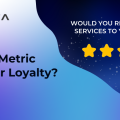Profitability and Loyalty Programs - How to measure and increase ROI in your Loyalty Program
Reading time: about 8 minutes

Whether you wish to agree or not, most companies are driven by the ever-long pursuit of profitability. A quick gaze into the last 200 years of industrialist history clearly pertains to that fact. But it can’t all be fueled by consistent profit right? Even in the anelects of ancient philosophy, Confucius himself said “If your conduct is determined solely by considerations of profit you will arouse great resentment.”
Whether your real intent is driven by pure profit or not, it doesn’t have to be a one sided affair, as both parties, namely your customers are able to mutually benefit. This is where loyalty programs are a powerful tool to increase customer retention and customer acquisition, but also provide your customers with benefits and new services. One of the hardest issues that always faces loyalty programs is making sure that they provide a ROI (Return on Investment). This in itself seems like an easy thing to measure but in practice can be quite confusing and detailed. But never fear! In this article we will guide you through some basic principles and methods in which you can truly learn to maximize on your loyalty program and measure your ROI accordingly.
Loyalty Programs and their pursuit
Loyalty programs are a paramount part of marketing strategy for any company looking to retain customers and boost customer loyalty. When you consider it’s more than five times more expensive to acquire a new customer than it is to keep an existing one, the benefits of retention are clear[1]. A recent study has indicated that in the world of e-commerce one-time customers actually cost businesses money. An example of this relates to online apparel retailers: Customers of online apparel retailers are not profitable for the store until they have shopped at the site at least four times –meaning the business needs to retain them for a minimum of 12 months [2].
As time goes on advances in digital and mobile technology, plus the prevalence of social media, have created more ways for companies to use loyalty programs to encourage customers to keep coming back to their business. Current research indicates loyalty programs are highly effective with 80 percent of users indicating they buy more from businesses whose loyalty programs they are a member of[3].
Every man is the architect of his own fortune
What metrics should you be looking for to know that you’re getting enough back from your initial investment to justify your course of action? First, think about the cost of your loyalty program. Loyalty programs don’t need to cost a fortune, but the costs involved do add up and if left unchecked - are able to spiral out of control. During the initial set-up, you’ll need to factor in software and design costs as well as the ongoing costs of marketing and the rewards you’ll offer (here at Sparta Loyalty we are able to assist you in this process). When regarding ROI, you can assign each customer a value by looking at four key factors:
• How much do they spend at the moment?
• How much would they spend if they were more engaged?
• How much would they encourage others to spend via referrals?
• How much do you predict they’ll spend in the future?
When you sum all of these factors up, you get customer lifetime value (CLV) – the total amount a customer will spend at your business in their “lifetime.” If you increase this value over time then you know your loyalty program is working.
Adhere to a protocol
To absolutely maximize the yield of your loyalty program there are a few things to keep in mind:
1. Preparation is key
Before you create your loyalty program, from the get go you need to be ready to start measuring ROI. So what does that mean? Make sure your program information is fully integrated and accessible to the whole company, product knowledge is key. It’s also important that your entire staff is on the same level as you. A key consideration is to integrate the loyalty program into your workplace culture, and create employee structures and incentives to drive it in the right direction. The program will get better results if the whole business is focused on its success. Also you need to make sure you have your analytics team ready as you’ll need to have the technology in place to be able to track progress, and the systems to be able to translate results into measurable data.
2. Initializing a CRM system of Database
One of the benefits of using a digital/online loyalty program (in contrast to an old fashioned physical card system) is that you can use it to keep track of your customers’ information and spending. A recent study showed that only 29% of small business owners use a CRM system [4]. This is an invaluable tool for calculating ROI in the long term. There are many CRM systems out there, but some are more specialized and suited for specific business than others, so make sure you conduct your research thoroughly or better yet, you can contact one of our specialists at Sparta and we can guide you.
3. Grasping your metrics
There are three types of metrics you can convert to percentages and use to assess the ROI of your loyalty program. These include:
• Levels of customer engagement with the program
• Quality of customer service (or resolution rates for customer complaints about the program)
• Employee knowledge from training (or the level of completion across the company)
These are the three biggest factors to customer experience, which customers themselves report to be one of the most influential factors in building loyalty. The higher the percentage of these three factors in your program, the greater the ROI. Even a small increase in these factors can have an impact as spending increases as the system allows positive feedback. This is initiated by customer referrals via your most loyal customers.
You can also use a metrics manager to keep track and help you assign projections for ROI. Such metrics that should be assigned to categories are:
• Customers are predicted to spend x amount (based on average customer spend over a lifetime).
• These customers are estimated to increase this spend by x amount via referrals.
• Using these figures, the jump in revenue can be estimated if engagement increases by x%.
4. Drive Engagement
It has been shown that most customers today expect a reward even for minimal expenditure. A look at market saturation, personalized rewards and cross- brand promotion are lifting the bar for businesses looking to increase retention with loyalty programs. The companies that are ahead are ones that use tools to drive engagement – social media, surveying tools and gamification.
Using metric managers to measure ROI also has another benefit as they can also give you extra insights into your customers and their consumer behavior. With those, you can better tailor your program to them in future, which in turn will ultimately up your ROI.
5. Bringing it to a personal level
Something to consider is that the best and most effective rewards are not necessarily fiscal or financial. Not long ago we explored the nature of emotional bonding that true loyalty programs produce and the evidence from that study showed that both employees and customers are motivated by emotional triggers. They seek the need to feel valued.
In recent years we can observe that customer appetites for rewards are growing, the challenge for businesses is creating that feeling of appreciation with personalized interactions that convince customers to not only choose you, but to ignore the competition. Repurchase is key, but true ‘all or nothing loyalty’ is the hallmark of a successful loyalty program. By focusing and targeting your customers on what their needs and behaviors are will allow you to be on the path of success. Once again; make sure that, at every level of the business, staff knows how important loyalty is, and are committed to improving it. This is paramount.
6. Get to know your customers
Finally, make sure you truly understand what makes your customer tick and how to keep them loyal to your products. To get to the heart of your customers needs and desires is the only way to be created a successful loyalty program
So above all else it’s important to:
• Analyze your data.
• Predispose employees to encourage loyalty.
• Seek more feedback and set down several ways to collect feedback and measure engagement.
• Don’t always rely on single question loyalty surveys.
• Keep rewards relevant and personable, but also dynamic.
• Foam, rinse and repeat. (Or measure, adjust and re-measure.)
Where do we fit in?
Here at Sparta Loyalty we are passionate about loyalty programs and increasing your chances of success with them. But most importantly we are also committed to driving an increase in your ROI. Our specialized team is available to help you take that next step and further your gains. So what are you waiting for?
1. http://www.forbes.com/sites/tjmccue/2013/02/04/warning-is-your-new-customer-coming-back-4-steps-you- should-take-now/
2. Source: For Love or Money? 2019 Consumer Study into Australian Loyalty Programs
3. http://www.cmo.com/articles/2013/7/18/customer_retention.html
4. http://www.manta.com/resources/special-projects/e-book-achieving-customer-loyalty
- Author: Spartavity
- Entry Date: 6 10 2021





